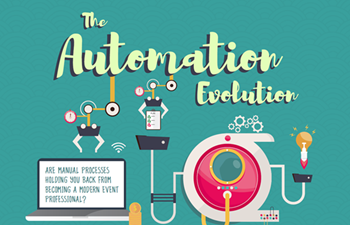One of the best ways of advertising your hybrid event is through great landing pages. However, creating a landing page that entices possible attendees to buy tickets is not always easy. Take a look here as we describe the top tips for virtual and hybrid event landing pages, along with everything you should avoid.
What are virtual and hybrid event landing pages?
Unlike your main website, event landing pages are a specific page in which its only goal is to get more attendees for your event. This landing page is aimed at increasing awareness and sign-ups for a virtual or hybrid event.
Event landing pages are important for a variety of reasons. From getting higher in SEO and increasing visibility, the advantages are endless.
Businesses hosting events use landing pages all the time to focus on channeling leads to a single location. By funneling all the traffic to one page in this way, you can focus on increasing conversions. This is achieved by providing all the information they need in a way that will keep them engaged and keen to attend the event.
Do: Know your target market
Before creating your event landing page, you should first have a good grasp of who your target market is. Different event-goers will be put off or encouraged by a specific landing page. By gathering all the data and knowledge possible about a specific target audience, you can cater to them by providing a landing page that speaks to their interests.
If you’ve organized previous events for that target audience, you can use the data from that event to help with your new landing page. Think about it: what do they like? What problems can your event help them with? Why should they go to this event? This will be key in helping them understand what’s in it for them, which will help with increasing sign-ups.
Do: Create an enticing headline
The headline will be the very first thing that will entice your viewers into interacting with the landing page and signing up. The more enticing a headline is, the more likely they are to stay on the page and find out about the event. Whether the headline contains some sort of promotion or a promise of what the event will give to the attendee, as long as it is relevant and provides something to the target audience, it will work.
This also leads into CTAs. CTAs (also known as click-through actions) are often buttons and text that visitors click on to complete a specific action, such as filling out a form to sign up for the event or giving their email address for event correspondence.
Ensuring your CTA has enticing wording to make your target audience more likely to click on it is key. In the early stages, why not use A/B testing to try out a range of different CTAs to see which one performs the best and use that one for the highest success?
Don’t: Create a cluttered design
The design of a landing page will be the first thing they see when they go on it. Because of this, you need to create a compelling and trendy design that will encourage them to sign up. But what should you not do to ensure your customers like it?
First, it’s recommended not to clutter it with loads of fancy visual animations and pictures that are not relevant to the event you are trying to promote. Make it look nice and simple, which is also vital for improving user-friendliness.
Don’t: Make it difficult to sign up
Another thing you shouldn’t do is to make the button to sign up and register hard to find. If they can’t find it easily, they are less likely to sign up. This is especially true if you have a sign up process where you have to fill out pages and pages to register. If possible, try and consolidate it into one page to reduce the amount of effort that a potential attendee will have to exert.
If your landing page is only suitable for desktops, it will be very hard for someone to sign up on a mobile device. Ensure it is first mobile-friendly, desktop friendly, and even tablet friendly, before launching the landing page.
Do: Include all details for the event
When we mentioned that you should keep it simple, that doesn’t mean that you shouldn’t include lots of information on the landing page. Potential attendees are usually wondering about a few things:
- When is the event taking place?
- What’s the location? (for in-person attendees)
- What will be the timetable for the event?
- Prices
- Sponsors
- Who are the speakers? What’s their experience?
All of these answers and more are vital in letting potential attendees find out all they need to know before registering for the event. If this information isn't shown, they will be in the dark and less sure if they want to join this hybrid or virtual event.
Having a live chat or a contact section is also essential for those who want to find out more information that isn’t on the page. Many event planners often mess up at the step.
Access the latest business knowledge in Marketing
Get Access






Comments
Join the conversation...